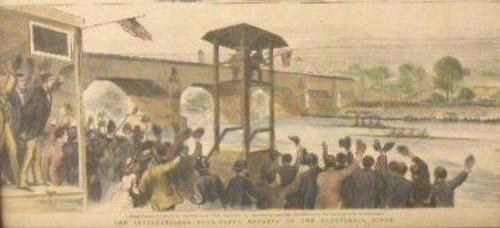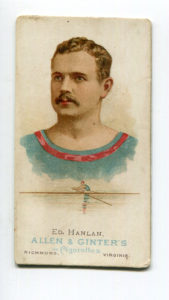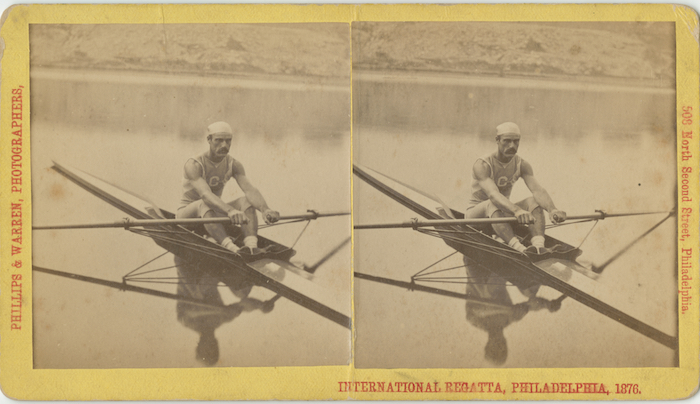Rowing was the most popular spectator sport in the country in 1876, when Philadelphia hosted the first International Regatta in the country. But will that historic event be highlighted when the Please Touch Museum digitizes and enlivens its detailed 20-by-40-foot model of the Centennial Exposition? Will the Schuylkill River be shown, with men rowing their heavy wooden sculls on it? (Only men competed at the time, and women’s rowing was frowned on this Victorian era.)

Today’s Philadelphia Inquirer reports that the Please Touch will reimagine its “poorly lit” model of the 200 exhibition halls that once populated the plateau where the museum now sits. Many of the 10 million tourists who visited the exposition that year would travel by train from downtown or up the river by boat to get there.

Canadian, Irish and English athletes came here to race in both amateur and professional races. A star was the Canadian Ed Hanlan, a professional rower so cock-sure of himself that in the middle of his single sculling race, he stopped rowing and watched as his competitor, Fred Plaisted crept up on his stern. Hanlan then took off to victory. Hanlan was among the first to use the sliding seat and swivel oarlocks, helping to account for his speed. He went on to be such an international icon that he was pictured on collectible cards sold in cigarette packs, much like baseball player cards sold with bubblegum.
For his part, Fred Plaisted would prove himself as a rowing coach. Number 1 Boathouse Row was named for him –Plaisted Hall– though this once-public boathouse deteriorated and was replaced in the 1990s by Lloyd Hall, with basketball courts.
Another sculling celebrity was Charles Courtney, who won his amateur race at the Centennial but quickly turned professional at a time when gambling was a sport in its own right and he could make upwards of $10,000 a race. Spectators, too, could pocket thousands on side bets. Of course given the stakes, shenanigans happened, if not crimes, and Courtney once went out to race Hanlan on New York’s Chautauqua Lake, only to find his boat had been cut in half overnight.

The International Regatta here did not exactly go off without a whiff of something smelly. As I wrote in my book:
“The London Rowing Crew left irate after a judge claimed that the men of its four-oared boat had fouled. The Times of London carped that in America, ‘amateur was an elastic term and included coal-whippers, glass-blowers, hewers of wood and drawers of water.’ “
After all, the “amateurs” in England by then were largely the “gentleman rowers” of Oxford and Cambridge, and British amateur rules would later bar those who worked with their hands, including brick-layer John B. Kelly Sr. (Grace’s father) from rowing. The rules said that such workmen had an “unfair advantage” over the gentlemen rowers.
Here’s another question for the Please Touch Museum: Will it somehow celebrate Thomas Eakins’ masterpiece, “The Gross Clinic,” which was relegated to the Army Post Hospital, the medical building of the Centennial celebration. Eakins, one of America’s greatest realist painters (and a rower himself) had dearly hoped it would hang in the celebration’s art exhibit which took place in Memorial Hall — the very building that is now the Please Touch Museum.
